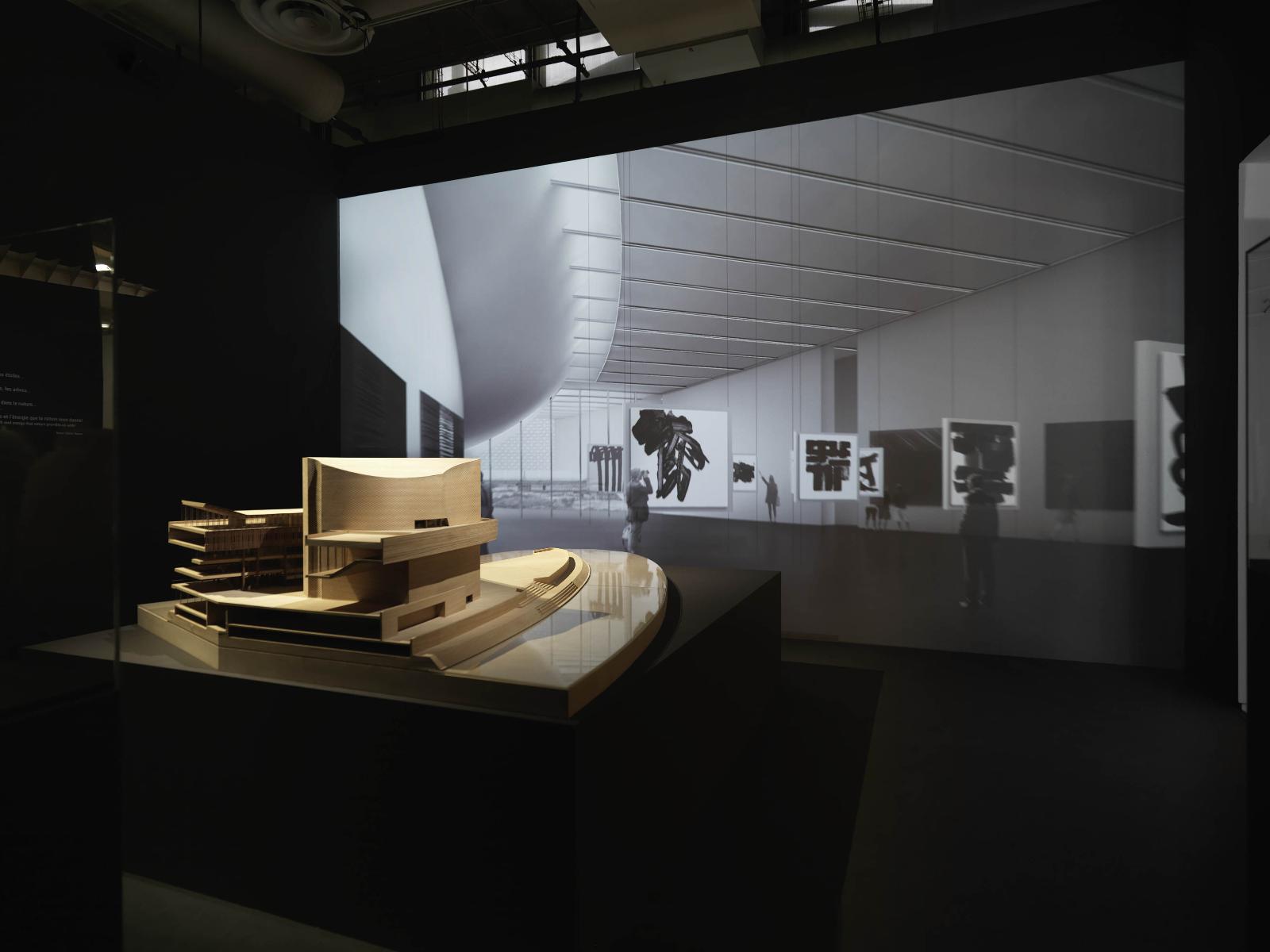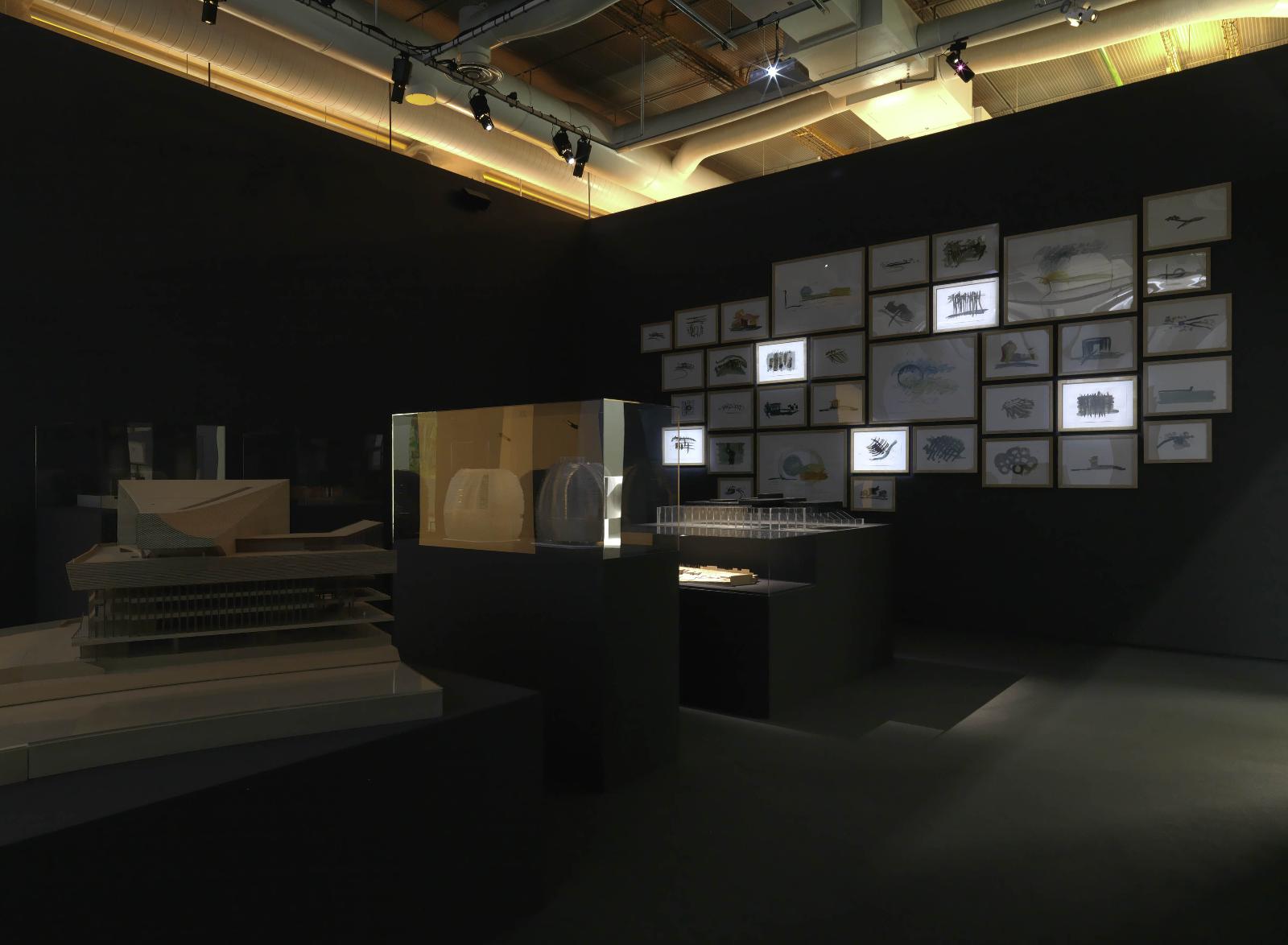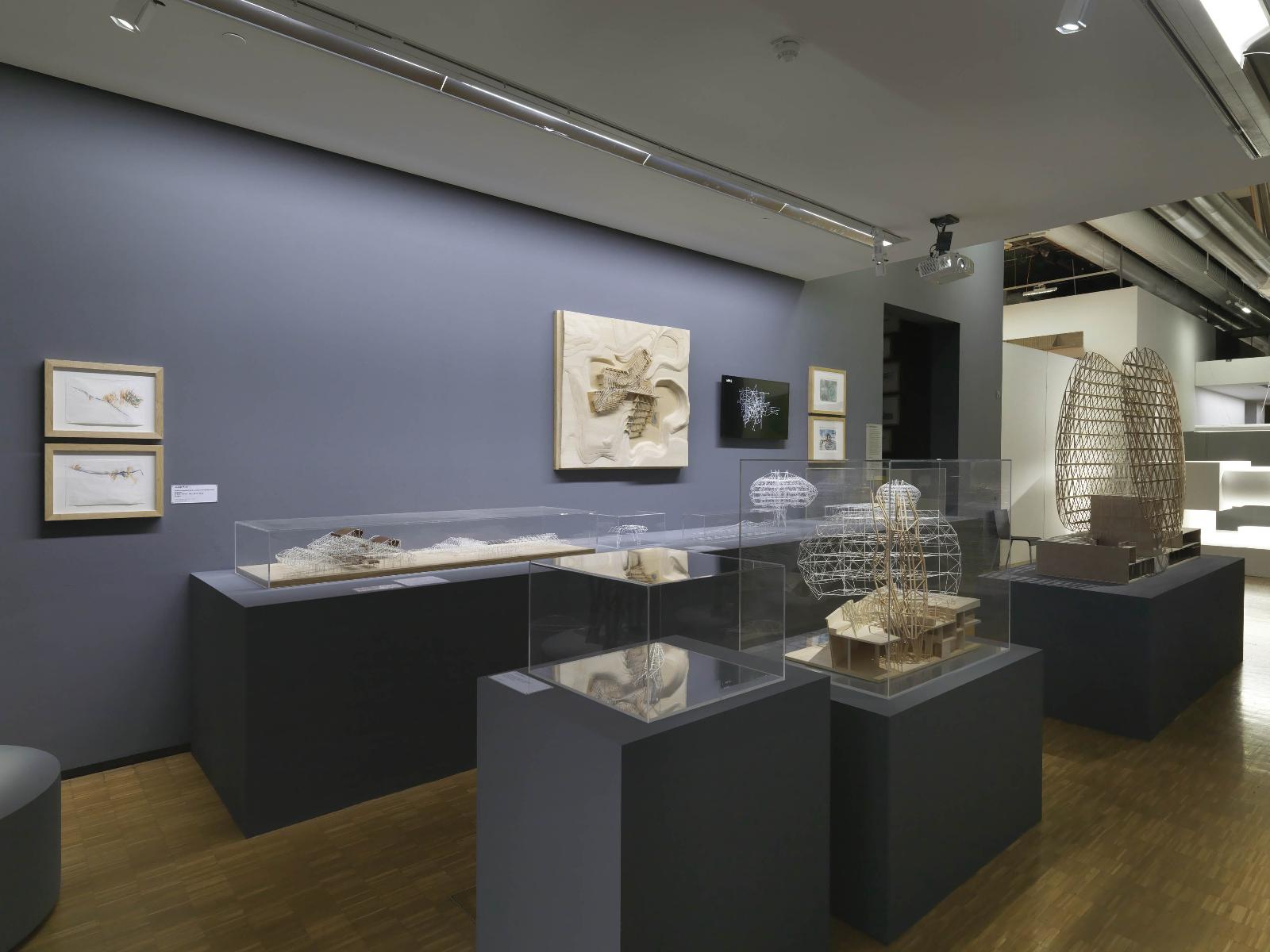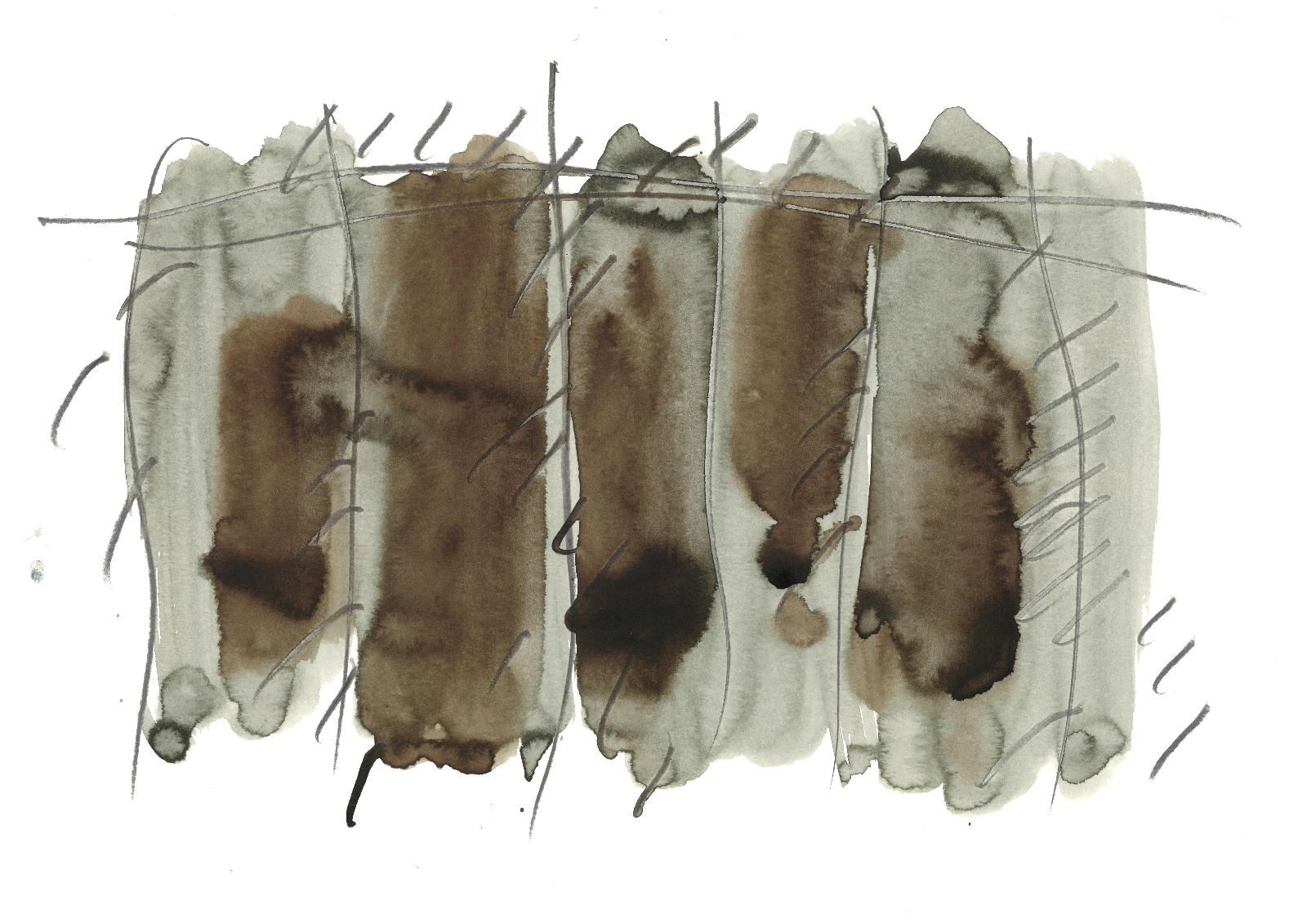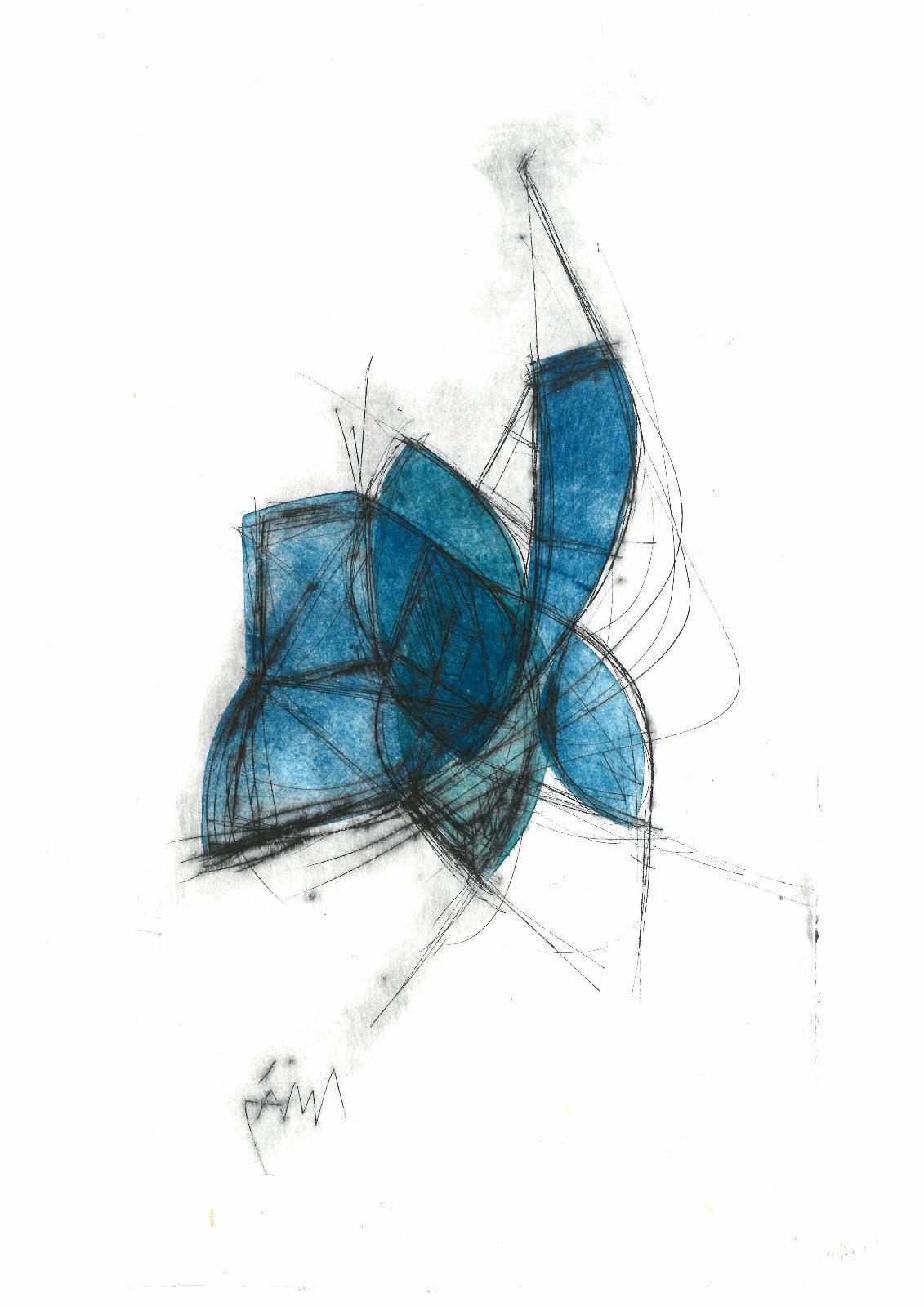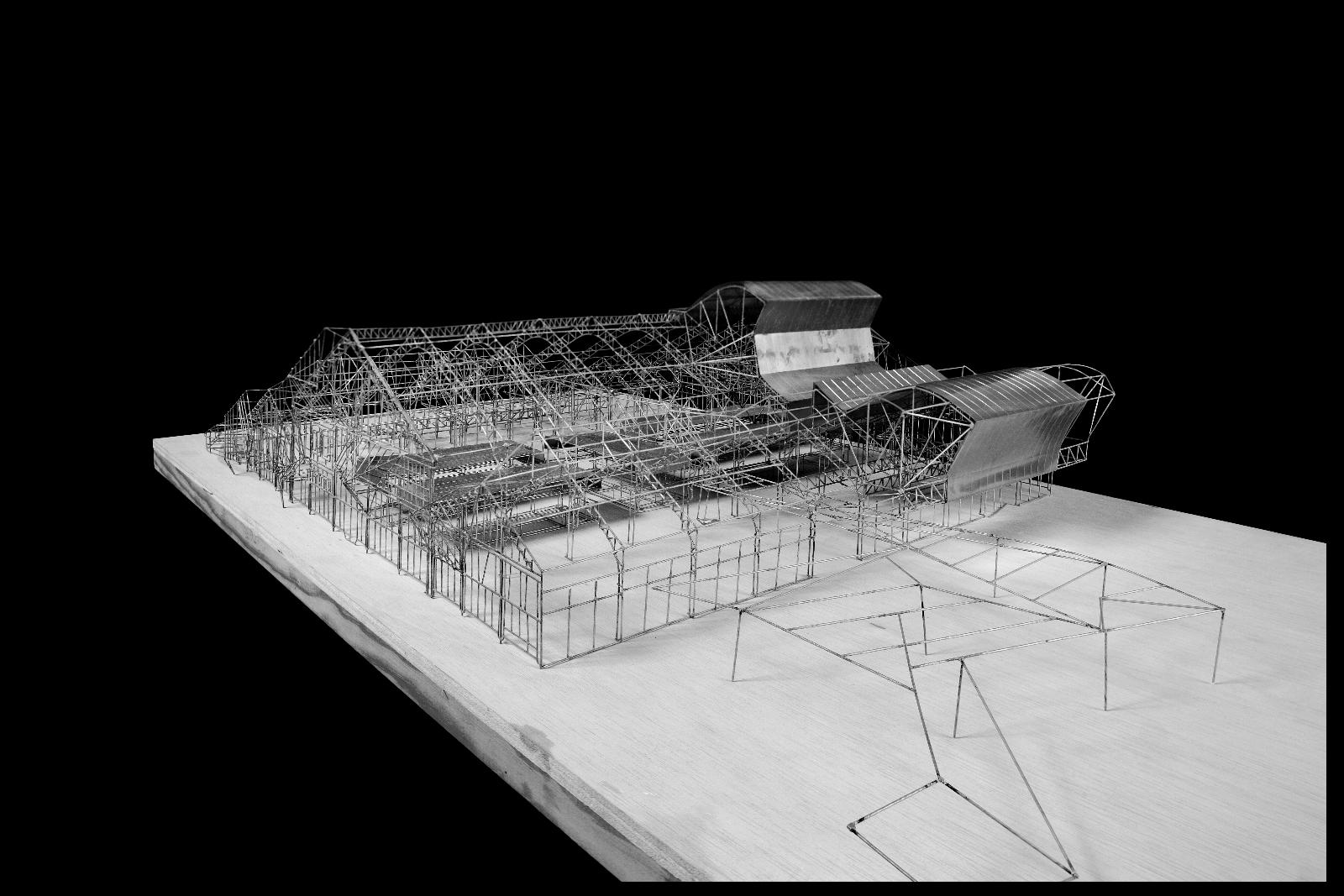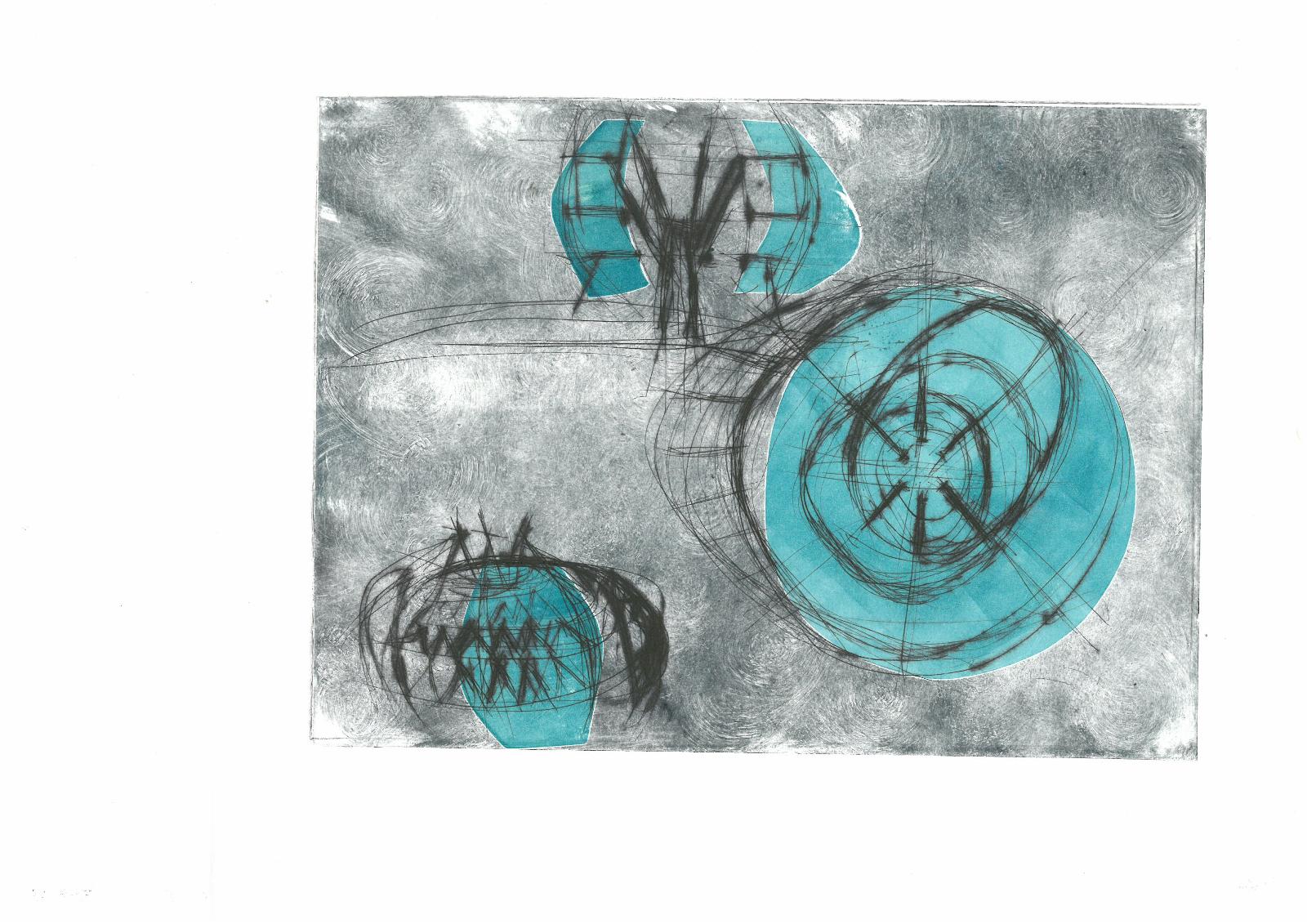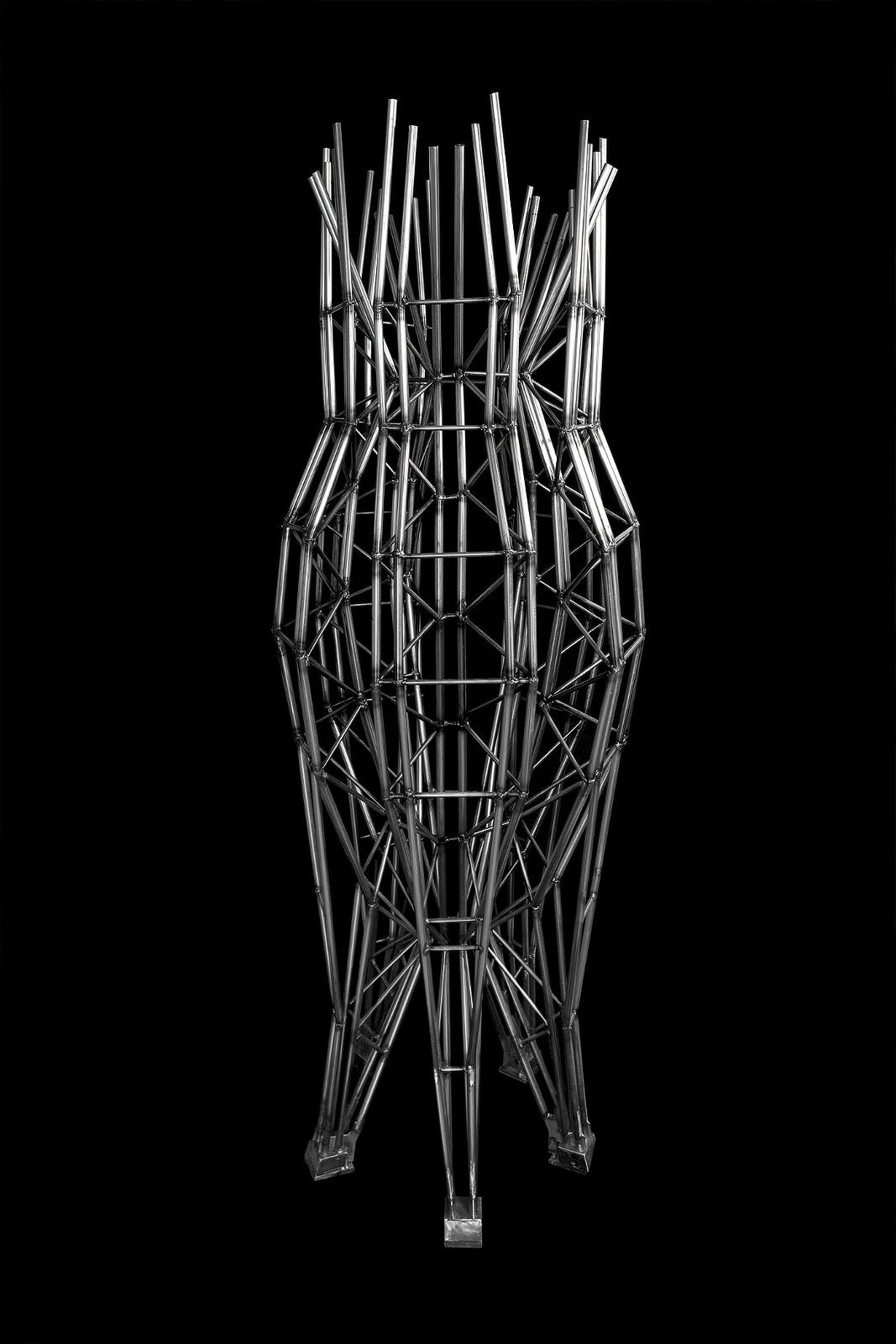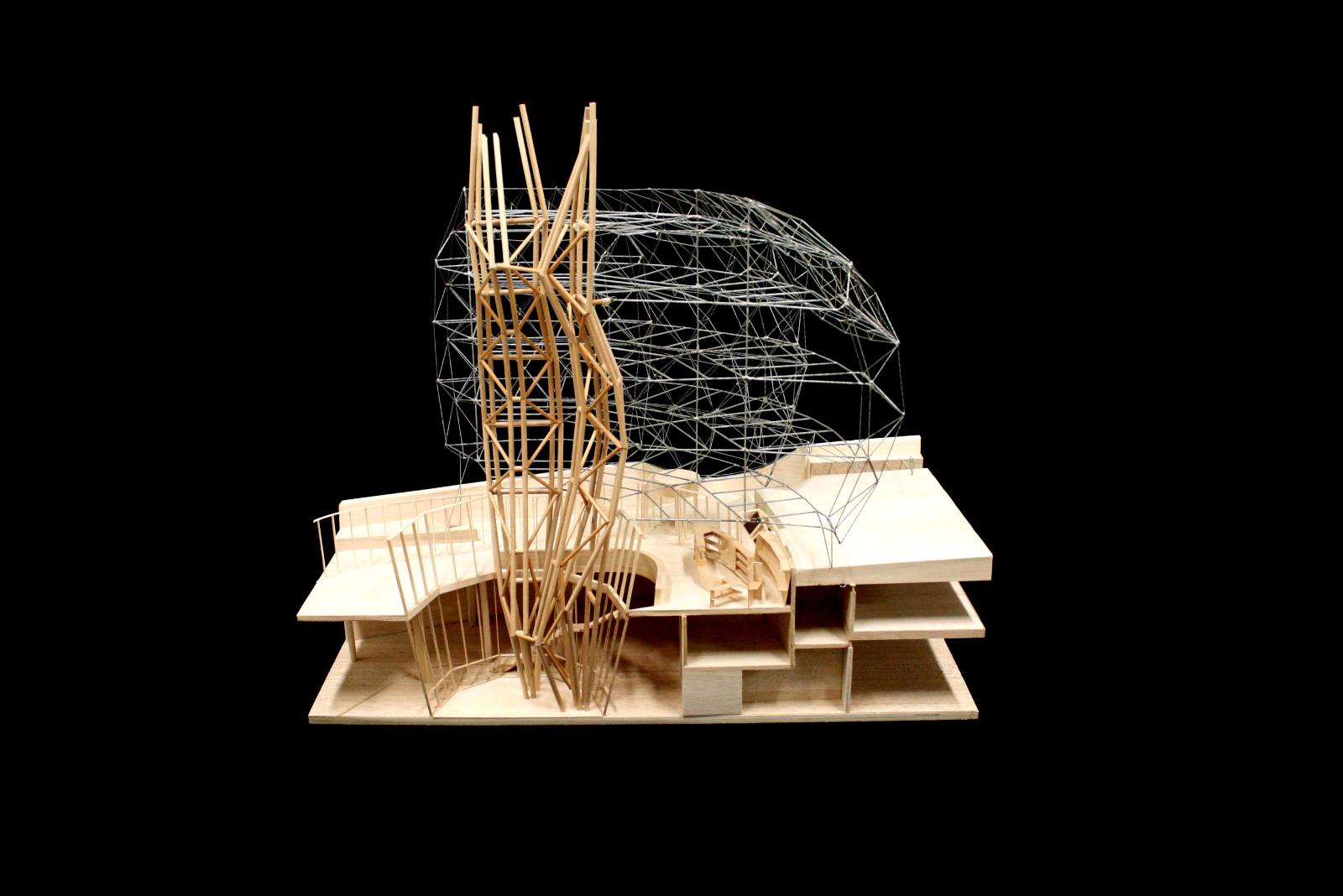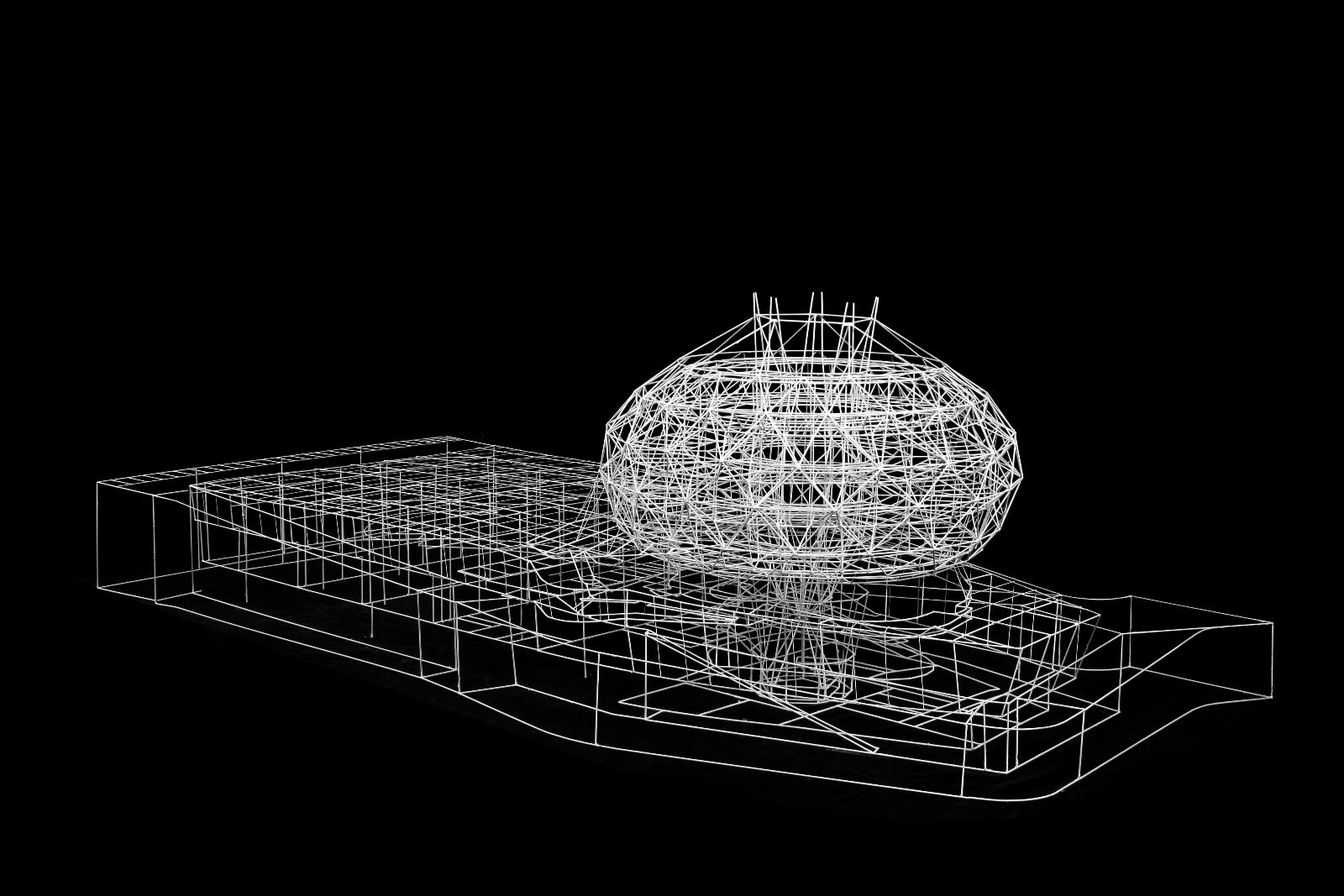RCR
From mid-September 2020, the Musée national d’art moderne - Centre de création industrielle / Centre Pompidou à Paris will be showing a set of 73 sketches and 10 models that make up the RCR collection at the centre of contemporary art, which can be visited in room 28 on the 4th floor. Meanwhile, in room 29, MiAS will exhibit 42 models, 14 sketches and 18 engravings, which will also become part of the museum’s permanent collection.
This show highlights the Pompidou’s support for the creators of the Soulages Museum, in Rodez, which emerged a few years ago when the Centre expressed a desire to add some work by RCR Arquitectes to its architecture collection. The Institut Ramon Llull is collaborating on the project, as it did in November 2019 on a lecture on RCR’s work, centred around the theme of shared creativity.
The RCR team’s career has been especially well recognised in France: They were named Chevalier & Officier Ordre des arts et des lettres in 2008 and 2017, while the Académie d’Architecture awarded the Médaille d’Or to Rafael Aranda, Carme Pigem and Ramon Vilalta in 2015, and even named them international members on 20 February 2020. The trio were awarded the prestigious Pritzker Prize for Architecture in 2017.
The show contains a selection of 7 projects, from the tender they won with the Punta Aldea Lighthouse to their designs yet to be built in Paris: Île Seguin and the Pavillon Vide.
The room has been designed as a wider sensory experience, thanks to a collaboration with artistic duo CaboSanRoque. The staging portrays the sketches and models as materials with their own voice, which take centre stage and bring the visitor closer to the origin of the ideas, intentions and energies that materialise in a design or building. All the pieces are grouped together and separated from the internal logic of each project, as the aim of the exhibition is not to explain each project in detail, but rather to highlight each medium’s own expressiveness, and even emphasise the physical and exclusive characteristics of the format on its own, without it being transferred to the final architectural piece.
CaboSanRoque has created a polyphonic space in which the very different perspectives of photographer Hisao Suzuki and Marc Checinski come together. Through sound, light and video, the visitor is submerged in an immersive environment that presents a panoptic view of the creative process and the world of sounds where buildings take shape.
The room space is bound by a wall displaying all the sketches and the opposite wall, onto which videos by Hisao Suzuki and Júlia de Balle of the corresponding final buildings are projected, from floor to ceiling. The drawings are arranged with no space between each frame, thus forming a large picture measuring around 7 x 4 m: a picture made of pictures that seeks chromatic and formal relationships between the sketches, beyond their proximity to those that are part of the same project. The models are distributed around the room, between these two surfaces.
The visitor is submerged in the world of RCR with all their senses: as they watch the video of a certain project, the lighting becomes brighter and emphasises the corresponding sketches and models. Meanwhile, they are immersed in the quadraphonic reproduction of this building’s sound environment, and Marc Checinski’s voice talks about the project from within the corresponding model. Times of different speeds and depths overlap: the time of Marc Checinski’s poetry and fiction, the objective time to which the sound recorded at each place transports us, and the real time of the videos, on the border between photography and video.
The evocation of these simultaneous perspectives submerges the visitor in the depths of the projects, where they can feel the soul that inhabits them.
Career
Rafael Aranda, Carme Pigem and Ramon Vilalta finished their studies at the Vallès School of Architecture (ETSAV) in 1987 and have been working together since 1988, under the name RCR ARQUITECTES in their home town of Olot, with a team trained at their side. Since 1989, they have been architect consultants for the La Garrotxa Volcanic Zone Natural Park, and they have lectured in Urban Planning, Landscape Architecture and Project Design at ETSAV and ETSAB. Since 2008, they have been organising and leading an international summer workshop in their studio, located in the old Barberí foundry, through their laboratory structure RCR Lab:A. They created RCR Lab:A in 2017, having started the RCR BUNKA foundation in 2013 to encourage appreciation for architecture, landscapes, arts and culture.
They have been awarded the 2017 Pritzker Prize; the Generalitat de Catalunya’s National Culture Prize for Architecture in 2005; the Repúblique Française’s 2008 and 2014 Chevalier & Officier de l’ordre des arts et des lettres; honorary fellowship of the AIA American Institute of Architecture in 2010; international fellowship of the RIBA Royal Institute of British Architects in 2012; the Médaille d’Or from the Académie d’Architecture in 2015; the Gold Medal from the Generalitat de Catalunya in 2018; and international membership of the Académie d’Architecture in 2019.
What’s more, they have received a series of acknowledgements for specific projects, including the European Prize for Architecture: Industry 2017 (Hofheide Crematorium); the Spanish International Architecture Prize 2015 (Soulages Museum); a Belgian Building Award in 2011; recognition by the European Mies van der Rohe Award with a finalist design (Sant Antoni-Joan Oliver Library), four selected designs and two nominated designs; four international Contractworld awards; ten FAD awards; joint first in the Fourth International Landscape Architecture Rosa Barba Prize (Pedra Tosca Park); and Honourable Mention in the 2014 European Prize for Urban Public Space (La Lira Theatre). They have also won a series of national and international competitions, the most recent being the Mas Miró Museum in Mont-Roig del Camp (joint winners).
They have taken part in international exhibitions like the Biennale di Venezia (2000, 2002, 2006, 2008, 2012, 2014 2016); On-Site: New Architecture in Spain in New York’s MoMA and Madrid (2006); and Global Ends at the Toto Gallery Ma in Tokyo (2010). They have held individual exhibitions (Works 1988-98) in Tokyo, Spain (Exfoliacions), Bielefeld (Germany) (RCR Arquitectes), Ljubljana (Slovenia) (RCR Arquitectes), Palau Robert (Barcelona), Museo ICO (Madrid), Palacio de Miramar (San Sebastián) (RCR Arquitectes Creativitat compartida), the House of Art (České Budějovice, Czech Republic) (The Intangible Tangible), Centre Arts Santa Mònica (Barcelona) (RCR: Papers), Oris House of Architecture (Zagreb) (Landscapes of Ideas: the Sketches of RCR Architects), and, most recently, at Centre Cultural El Rule in Mexico City (RCR.Obra sobre papel), the Biennale di Venezia (RCR Dream and Nature) and Toto Gallery Ma in Tokyo (Geography of Dreams).
Their other outstanding projects include the Tossols Basil athletics stadium in Olot; the Waalse Krook media centre in Belgium; the Legal Sciences Faculty in Girona; the Plaça Europa 31 office building in L’Hospitalet de Llobregat; the new Sants Station complex in Barcelona; the Bell-lloc wine cellars in Palamós; the Les Cols restaurant, marquee and pavilions in Olot; leisure and cultural spaces in Riudaura; the La Cuisine art centre in Nègrepelisse Castle; the ‘El Petit Comte’ and ‘Els Colors’ nurseries in Besalú and Manlleu; the Escola del Sol in Font-Romeu; and over 20 single-family homes.
MiAS
The Musée national d’art moderne - Centre de création industrielle / Centre Pompidou à Paris has recognised the internationally important trajectory of the MiAS Studio including some of their works in museum's permanent collection. The display brings some of the more personal aspects of the design process behind several of the firm’s most emblematic projects into the public domain. It features initial sketches and wire models that reveal the intricacies of the firm's architecture. Highlights include models and drawings of some of the studio’s award-winning projects, such as the iGuzzini Illuminazione HQ, the 22@Plug-in building, the Barceloneta Market Hall, the Torrebaró residential building and the headquarters of Andorra Telecom. It also features an audiovisual presentation that explains the conceptualisation and design processes behind the exhibited projects, as well as other audiovisuals to illustrate the sum of the finished constructions as if they were part of a single project.
The display presents the material as a reflection on the value of drawing in architecture. And while it essentially focuses on the initial stages of the creative process, it also aims to illustrate the constant process of verification that a project undergoes during its design process. If drawing is a way of understanding and explaining the world, this is made evident by the complexity of both the drawings and the subsequent models on display, which can be understood as specific possibilities, but also as autonomous entities or unexpected results.
The freehand and pencil drawings explain the architect’s first intuitions. They act as a rapid outline of the geometry that will later define the development of the project. Far from being intended as an overview or summary, which is the role of the final drawings, these initial sketches are the intuitions of a drawing hand which reveals the architect's doubts, but also the most significant and intense moments in the biography of each project. In short, they constitute a work material that, while provisional, establishes a dialogue and complicity with the spectator. Another group of colour drawings capture the energy of a new project. The engravings are born from the desire to translate these initial intuitions, physically, onto a hard surface. Their very elaboration allows the architect to accentuate some lines while leaving other traces invisible so that the project continually appears and disappears.
Wire models, on the other hand, redraw these first lines and approximate a possibility. In no case are they intended as a finished product, but they form part of an empirical process. Suspended in space, the lines reveal information about the form, structure and construction of the project, describing a wide variety of conditions. It involves the sewing and weaving of lines in mid-air to construct complex and often invisible geometries, exposing the fragility and delicacy of the design. The gravitational forces move across them resisting the most fundamental law of all: the law of gravity. These are delicately balanced objects; They are not intended to define the space. Deprived of an interior and exterior, they settle on the surfaces allowing the air to inhabit them. Intellect will take care of the space.
The room aims to showcase a clear continuity between the projects in such a way as to highlight an interconnection between objects and drawings. The audiovisual materials that accompany the exhibition reinforce this relationship and complete the explanation of each of the projects.
Career
The MiAS architectural studio has its headquarters in Barcelona. It was founded by architect Josep Miàs in the year 2000. Josep Miàs qualified as an architect at the Barcelona School of Architecture. He was associate architect to Enric Miralles from 1990 to 2000.
His firm is known for its unpredictable, innovative and experimental proposals. It combines formal, technological and structural research, as well as investigations into cutting-edge materials and sustainability, with social, cultural, historical and economic concerns to offer never-seen-before propositions. Hence, the studio has become a point of reference for its unique projects and designs, and for its ability to incorporate new technologies into the world of architecture.
The firm has gained international recognition for projects such as the Fontanals Golf Club, the transformation of the Historic Centre of Banyoles, the new Barceloneta Market Hall, and its work on the Tibidabo Amusement Park, the 22@ Plug-in building and the iGuzzini Illuminazione HQ in Barcelona, among others.
It has won numerous national and international awards, including the 2013 International Stone Architecture Award, the 2013 Architizer Building of the World Award, the 2011 Archdaily Best Building of the Year Award, the Award for Best Educational Facility in Spain at the 2011 A+ Architecture Awards, the 2009 Catalonia Construction Award, the 2007 City of Barcelona Award for Architecture and Urbanism, the 2007 Girona Architecture Award, the Association of Catalan Architects (COAC) Award 2008–2013, the Catalan Association of Young Architects’ (AJAC) 2004 Award for Best Young Architect in Catalonia, and the 2013 AIA New York City Recognition for International Relevance.
Its work has been exhibited and published internationally at the COAC (Barcelona, Spain), Nuevos Ministerios (Madrid, Spain), the Cité de l’Architecture (Paris, France), the Stadelschule (Frankfurt, Germany), the Architektur Forum (Zürich, Switzerland), the TU University (Berlin, Germany), the House of the Architect (Kiev, Ukraine), the Bartlett School of Architecture (London, UK), the Anhembi Morumbi University (São Paulo, Brazil), the 2012 and 2014 Biennale di Venezia (Italy), the 2012 WAF (Singapore), the University of Belgrade (Serbia), and the University of Nis (Serbia).
Josep Miàs has been Professor of Projects at the Barcelona School of Architecture (ETSAB) and the Vallès School of Architecture (ETSAV), both belonging to the Polytechnic University of Barcelona (UPC), the International University of Catalonia (UIC), and the La Salle Campus Barcelona of the Ramon Llull University. He has also been visiting professor at the Stadelschule (Frankfurt, Germany) and at the Harvard GSD (Cambridge, USA). He is currently a visiting professor at the Facoltà di Architettura UNISS (Italy) and Professor of Architectural Practice at the Bartlett School of Architecture, University College London (UK).
WORKS ON DISPLAY
ROOM 28. RCR ARQUITECTES
Collection of sketches and models by RCR Arquitectes at the Centre Pompidou
73 SKETCHES
Le Pavillon Vide, Paris. France (2014-)
Pol artístic i cultural "Île Seguin", a Boulogne Billancourt. France (2015-)
Soulages Museum, Rodez, France (2008–2014).
La Lira Theatre Public Space, Ripoll, Catalonia (2003–2011).
Bell-lloc Wine Cellar, Palamós, Catalonia (2003–2007).
Sant Antoni Public Library, Barcelona, Catalonia (2002–2007).
L'Espai fluvial i el lleure. Olot 2002, Olot. Catalonia (1989-1990)
Sphere of Light, Palamós harbour, Catalonia (2000–2003).
Pedra Tosca Park, Les Preses, Catalonia (1997–2004).
Tossols-Basil Athletics Stadium, Olot, Catalonia (1991–2012).
Lighthouse, Punta Aldea. Gran Canaria, Spain (1988-1990)
10 MODELS
Le Pavillon Vide, Paris, France. 2 models.
Pol artístic i cultural "Île Seguin", a Boulogne Billancourt. França . 1 model.
Soulages Museum, Rodez, France. 2 models.
La Lira Theatre Public Space, Ripoll, Catalonia. 1 model.
Sant Antoni Public Library, Barcelona, Catalonia. 1 model.
Tossols-Basil Athletics Stadium, Olot, Catalonia. 1 model.
Lighthouse, Punta Aldea, Gran Canaria, Spain. 2 models.
ROOM 29. MiAS ARQUITECTES
Collection of models, sketches and engravings by MiAS in the Centre Pompidou’s Permanent Collection.
42 MODELS
iGuzzini Headquarters, Barcelona, Catalonia (2006–2011). 20 models.
Footbridge, Palafolls, Catalonia (2007–2012). 2 models.
Tibidabo Funicular Station, Barcelona, Catalonia (2007–2008). 1 model.
Fontanals Golf Clubhouse, Girona, Catalonia (2000–2004). 1 model.
Barceloneta Market Hall, Barcelona, Catalonia (2000–2007). 5 models.
The Cloud Andorra Telecom Headquarters, Andorra la Vella (2014–2022). 5 models.
Passenger Service Center Competition, Kinmen, Taiwan (2014). 1 model.
New Camp Nou FC Barcelona Competition, Barcelona, Catalonia (2015–2016).1 model.
Topographic House, Llavaneres, Catalonia (2006–2009). 1 model.
Butterfly House, Besalú, Catalonia (2010–2012).1 model.
La Plana Market Hall, Esplugues de Llobregat, Catalonia (2017–2021).1 model.
Can Vidalet Market Hall, Esplugues de Llobregat, Catalonia (2017–2021).1 model.
Caixa Forum Competition, Valencia (2017).1 model.
Plug In Building, Barcelona, Catalonia (2006–2012).1 model.
18 ENGRAVINGS
Topographic House, Llavaneres, Catalonia (2006–2009). 1 sketch.
Butterfly House, Besalú, Catalonia (2010–2012). 1 sketch.
Footbridge, Palafolls, Catalonia (2007–2012). 2 sketches.
Torrebaró Residential Building, Barcelona, Catalonia (2009–2012). 3 sketches.
iGuzzini Headquarters, Barcelona, Catalonia (2006–2011). 10 sketches.
Rubí Market Hall. Barcelona, Catalonia (2004–2010). 1 sketch.
14 SKETCHES
Footbridge, Palafolls, Catalonia (2007–2012). 3 sketches.
Banyoles Old Town, Banyoles, Catalonia (1998–2012). 4 sketches.
Torrebaró Residential Building, Barcelona, Catalonia (2009–2012). 1 sketch.
Butterfly House, Besalú, Catalonia (2010–2012). 4 sketches.
iGuzzini Headquarters, Barcelona, Catalonia (2006–2011). 2 sketches.
RESOURCES
- HD Images https://we.tl/t-e9qBOSFKBW

